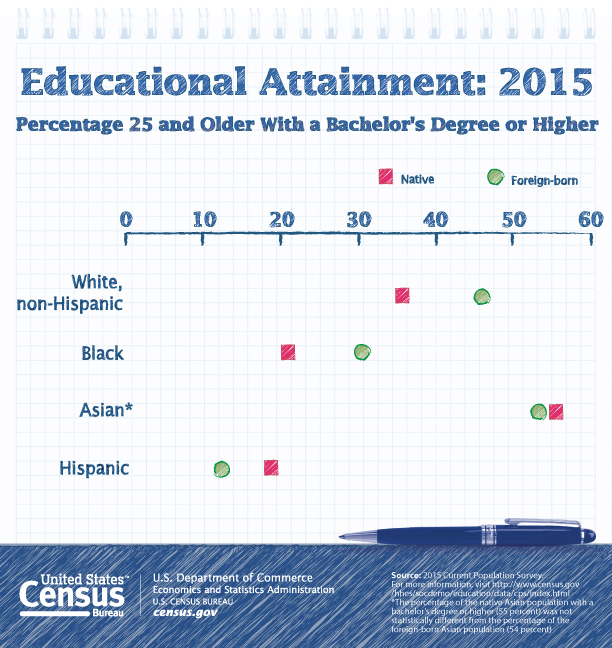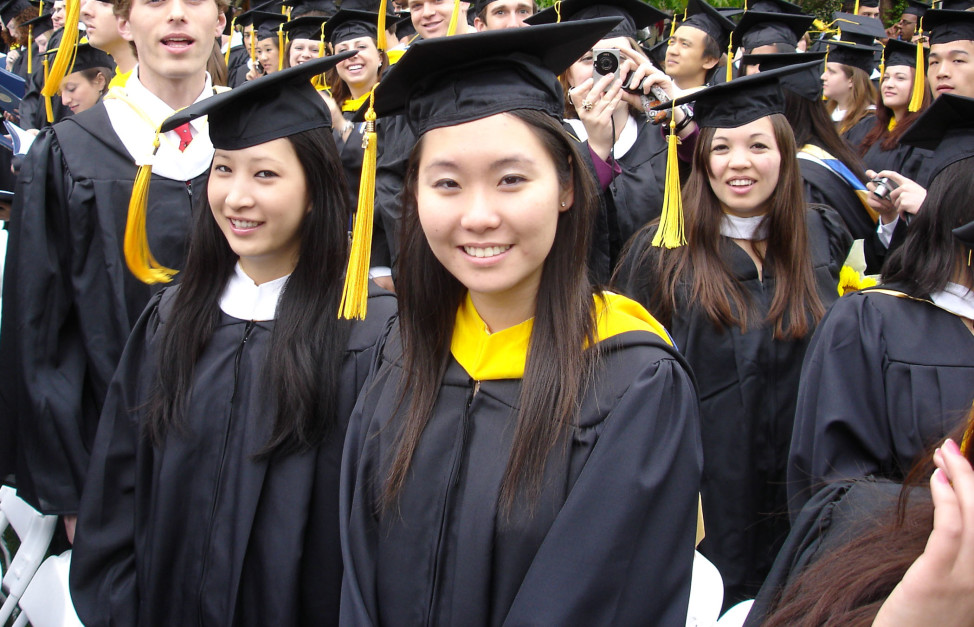Why Asian Americans Are the Most Educated Group in America
A 2010 report focusing on Asians in California — a state with the highest U.S. Asian population outside of Hawaii — found that expectation to be false. In California, for example, 45 percent of Hmong, 40 percent of Cambodians and Laotians, and one-fifth of Fijians had less than a high school education. The report also found that 20 percent of Pacific Islanders in the state eventually drop out of high school.
Asian Americans are the highest-earning and fastest-growing racial group in the United States.
They’re also the best educated, as new numbers
released by the U.S. Census Bureau demonstrate. More than half of
Asians in the United States, 54 percent, have at least a bachelor’s
degree. That’s up from 38 percent in 1995. It’s an impressive number,
especially when compared to the 33 percent college-graduation rate for
the total U.S. population.
The Census Bureau also found that higher-education rates for
native-born Asian Americans are the same as their foreign-born
counterparts.
Experts say this impressive rate of educational achievement has a lot
to do with a U.S. immigration policy that favors the applications of
highly-educated immigrants from Asian countries [thus, more East and South Asians than the SEAsian refugees, e.g. Cambodia].

“Since
1965, some Asian-American immigrants have come to the U.S. under
certain immigration preference categories that favor professional skills
and training,” Eliza Noh, an associate professor at California State
University, Fullerton, said in an email. .
is what fuels academic achievement.”
Asian Americans — immigrants and their descendants who come from
the Far East, Southeast Asia and the Indian subcontinent – account for
about 6 percent
of the U.S. population. Six groups make up the majority of this
population, including people of Chinese, Filipino, Indian, Vietnamese,
Korean and Japanese origin.
These highly-educated immigrants build so-called “ethnic capital“, which results in programs such as tutoring and college-prep courses that build their children’s academic achievement.
“Besides being able to spend more money on their children’s
curricular and extra-curricular activities, such as tutoring and
academic clubs,” Noh said, “middle-class parents can pass on their
knowledge of how to be successful in academia, such as study skills,
professional networking, and navigating educational institutions.”
“If Asian American parents emphasize education, it has more to do
with their perception that education can help them overcome existing
barriers in the labor market,” she said. “They know they cannot rely on
just their hard work and experience and ‘who they know’ in order to move
up the ladder.”
These kinds of statistics have resulted in Asian Americans being
dubbed the “model minority”. Lumping all Asian Americans into one group
contributes to the stereotype that all Asian Americans are highly
educated.
A 2010 report
focusing on Asians in California — a state with the highest U.S. Asian
population outside of Hawaii — found that expectation to be false. In
California, for example, 45 percent of Hmong, 40 percent of Cambodians
and Laotians, and one-fifth of Fijians had less than a high school
education. The report also found that 20 percent of Pacific Islanders in
the state eventually drop out of high school.
The model minority myth — the stereotypical expectation that
Asian-American students will excel at school and on the job — is taking
its toll.
Suicide is the second leading cause of death — behind unintentional
injuries such as car accidents — among Asian American women between the
ages of 15 and 24. The highest female suicide rates, across all ethnic
groups, occur among Asian American women between the ages of 15 and 25
and those over 65. So-called “model minority” expectations and family
pressure are often cited as factors contributing to the suicides.



No comments:
Post a Comment